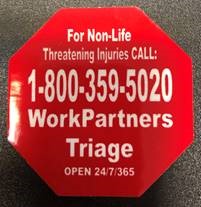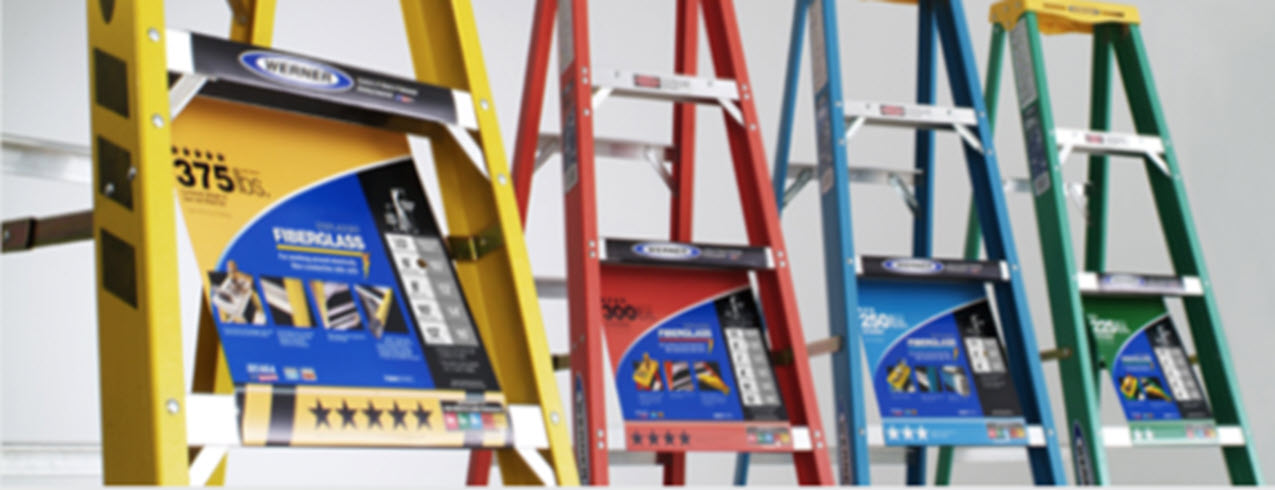LADDER SAFETY
When portable ladders are used for access to an upper landing surface, the side rails must
extend at least 3 feet (.9 m) above the upper landing surface. When such an extension is not possible,
the ladder must be secured, and a grasping device such as a grab rail must be provided to assist workers
in mounting and dismounting the ladder. A ladder extension must not deflect under a load that would
cause the ladder to slip off its support. (3)
• Ladders must be maintained free of oil, grease and other slipping hazards.
• Non-self supporting ladders must be used at an angle where the horizontal distance from
the top support to the foot of the ladder is approximately one-quarter of the working length
of the ladder. Wood job-made ladders with spliced side rails must be used at an angle
where the horizontal distance is one-eight the working length of the ladder.
• Fixed ladders must be used at a pitch no greater than 90 degrees from the horizontal,
measured from the back side of the ladder.
• Ladders must be used only on stable and level surfaces unless secured to prevent accidental
movement.
• Ladders must not be used on slippery surfaces unless secured or provided with slip-resistant
feet to prevent accidental movement. Slip resistant feet must not be used as a substitute
for the care in placing, lashing, or holding a ladder upon slippery surfaces.
• Ladders place in areas such as passageways, doorways, or driveways, or where they can be
displaced by workplace activities or traffic must be secured to prevent accidental
movement, or a barricade must be used to keep traffic or activities away from the ladder.
• The area around the top and bottom of the ladders must be kept clear.
• The top or top step of a stepladder must not be used as a step.
• Ladders must be inspected by a competent person for visible defects on a periodic basis and
after any incident that could affect their safe use.
• When ascending or descending a ladder, the worker must face the ladder and each worker
must use at least one hand to grasp the ladder when moving up or down the ladder.
• Safety Harnesses must be used while working from a ladder under any one or more of the
following:
– When working near a floor or roof opening or edge
– When working at an elevation where employee is 6’ or more above a lower lever.
• Ladders shall be tied off at all times unless someone holds the ladder at the base while in
use, and to the third rung from the top of straight and extension ladders to provide a tie-off
rope when the ladder is set up.
Only non-metallic, approved ladders shall be used during electrical operations where
employee-owners may come into contact with electrical circuits or systems.
• All portable ladders shall be equipped with non-skid safety feet and shall be placed on a
stable base. The access areas at the top and bottom of ladders in use shall be kept clear of
obstruction.
INSPECTING LADDERS
Ladders must be in good condition at all times. The user shall inspect the ladder before each use.
Ladders shall be inspected quarterly by a qualified person.
Bends, dents, cracks, loose or missing rivets, disconnected braces and corrosion weaken a ladder
seriously. Carefully inspect the area around rivet points on fiberglass ladders for hairline stress cracks.
Destroy any defective ladders immediately, or remove them from site.
Ladders with broken or missing rungs, broken or split rails, or otherwise damaged, shall not be used and
shall be removed from the project or repaired by competent person.
STORING AND TRANSPORTING LADDERS
When using ladders, store them on racks on locations designated, away from excessive heat.
Storage racks should have sufficient supporting points to avoid sagging. Long ladders need support
every 6 feet.
Properly support ladders being transported on road, street and highway motor vehicles. Supporting
points should be made of materials such as wood or rubber covered iron pipe to minimize chafing and
the effects of road shock.
LADDER INSPECTION CHECK LIST
CHECK FOR:
• Loose steps or rungs
• Damaged or slippery steps or rungs
• Cracked, split, bent or broken side rails
• Loose screws, nuts, bolts, or reinforcing rods
• Loose, damaged, missing shoes or anti-slip bases
• Loose, missing or defective extension locks


